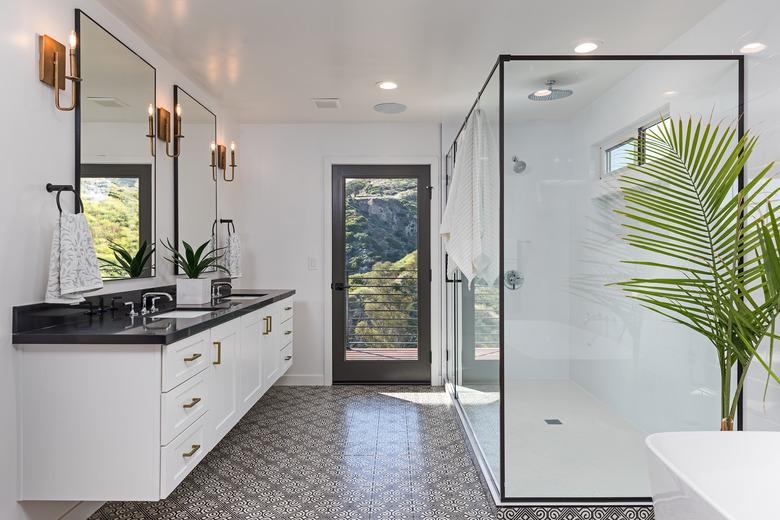Acrylic Vs. Fiberglass Shower
In the battle of acrylic vs. fiberglass shower materials, both come out winners with a durable, affordable option for your shower renovation. Deciding which type of shower to place in a new or existing home is important. The material used to make the shower stall or combination shower and tub stall affects how long the stall lasts. Before choosing to use either a fiberglass or acrylic shower, consider the pros and cons of each shower type.
Acrylic vs. Fiberglass Shower Composition
The two types of showers are the most common types and are very similar in that they are both made from molded plastic. Oddly enough, acrylic shower stalls include bits of fiberglass within their composition, and fiberglass showers encompass numerous materials, including particles of acrylic.
Fiberglass and acrylic are both lightweight materials, which makes them ideal for second-story bathrooms where weight can be an issue. The weight also makes installation easy.
Process of Making Showers
Differences exist and force you to compare acrylic vs. fiberglass showers because of the different processes used to create the showers and tubs. Acrylic showers are made from the combination of materials that are heated, stretched into a mold and then vacuumed into the final molded shape. They typically come in more textures, colors and customized looks than fiberglass.
Fiberglass, alternately, is made by pouring the melted materials into a gel-coated mold. The gel coating remains on the fiberglass shower or tub stall after it's made. Because of the process, fiberglass usually has fewer customization options than acrylic, resulting in a more manufactured look.
Considerations for Acrylic Showers
Acrylic shower stalls feature a stronger and more scratch-resistant surface. This means that an acrylic shower stall will last longer with a lower risk of chipping, cracking and fading. Since the color runs all the way through the acrylic sheet, scratches don't show up as well if they happen.
Acrylic liners can be placed over existing tub and shower stalls to transform old stalls into stronger, more durable and longer lasting acrylic showers and tubs. The process used to create acrylic showers eliminates pores in the shower or bath stall, preventing mold, soap scum and hard-water buildup from embedding into the stall and causing it to break apart, rot or leak.
Considerations for Fiberglass Showers
Fiberglass showers are less expensive than acrylic showers, but they don't last as long as acrylic stalls due to the way in which the fiberglass showers are made. The gel coating from the mold is transferred onto the fiberglass shower and protects the fiberglass material from water damage. The fiberglass is porous underneath the gel coating.
Over time, the coating wears away and the fiberglass materials are exposed. Once it's exposed, the porous material can become cracked or damaged due to excessive moisture. This forces you to replace the fiberglass shower soon than you might need to replace an acrylic shower. Fiberglass can also scratch more easily than acrylic.
Acrylic vs. Fiberglass Shower Cost
Cost is the main consideration for many homeowners when upgrading a shower in a new or existing home. Though fiberglass showers are less expensive, they'll need to be replaced before an acrylic shower. While both acrylic and fiberglass showers can be repaired sometimes, it's better to invest in a shower that lasts.
If money is an immediate issue, then perhaps a fiberglass shower is the best choice, followed by an acrylic lining when money will allow. If you have a little extra money in your remodeling budget, an acrylic shower is a great investment. Since it should last longer, you can wait even longer before you have to update it again, making your money stretch better.
